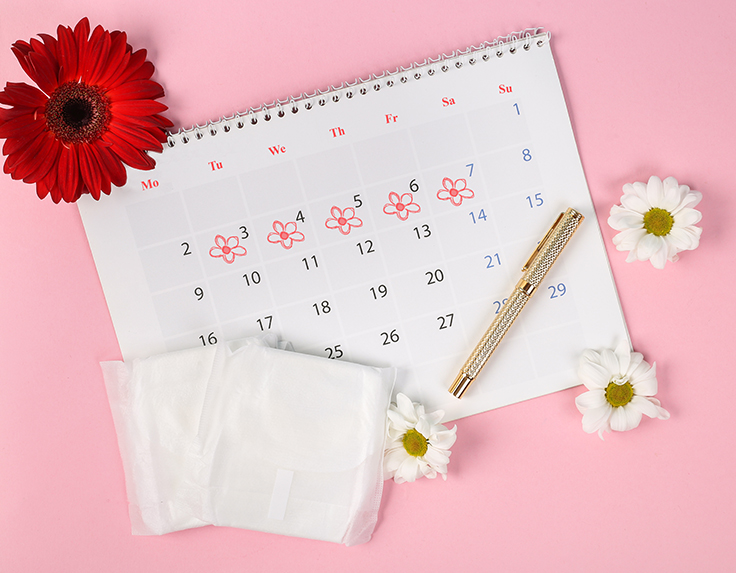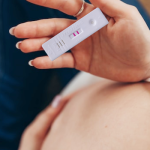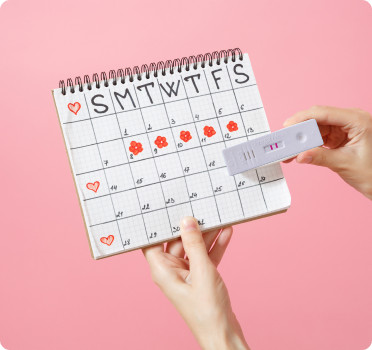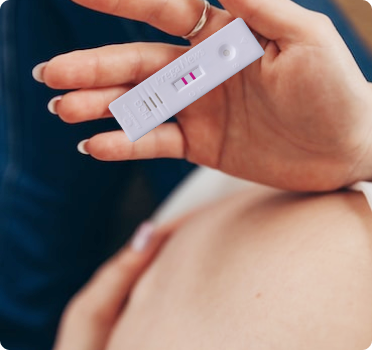Track Your Fertility Cycle with Our Accurate Ovulation Calculator
Are you trying to conceive or want to track your fertility cycle? Understanding your ovulation window is crucial for increasing your chances of getting pregnant. Our accurate ovulation calculator is here to assist you in predicting your most fertile days. By inputting some basic information about your menstrual cycle, our calculator can estimate when you are likely to ovulate.
This information can help you plan intercourse at the optimal time to maximize your chances of conception. Whether you are actively trying to get pregnant or simply want to understand your fertility patterns better, our ovulation calculator is a valuable tool for tracking your fertility cycle with precision and convenience.
Step-by-step guide on using an ovulation calculator
Using an ovulation calculator is a straightforward process that can help you predict your fertile days and increase your chances of conceiving. Here is a step-by-step guide on how to use an ovulation calculator effectively:
Step 1: Gather information about your menstrual cycle
Take note of the first day of your last menstrual period (LMP) as well as the average length of your menstrual cycle. The length of your cycle is calculated from the first day of one period to the first day of the next.
Step 2: Find a reliable ovulation calculator
Search for an ovulation calculator online or download a reputable ovulation tracking app. Make sure it provides accurate predictions and is user-friendly.
Step 3: Enter your menstrual cycle details
Enter the date of your last menstrual period and the average length of your cycle into the ovulation calculator. Some calculators may also ask for the length of your luteal phase (the time between ovulation and the start of your next period), but this is optional.
Step 4: Calculate your ovulation window
Once you’ve entered the necessary information, the ovulation calculator will generate an estimate of your ovulation window. This window typically spans a few days, representing the days when you are most likely to conceive.
Step 5: Track your fertility signs
Alongside using the ovulation calculator, it can be helpful to track additional fertility signs such as changes in cervical mucus, and basal body temperature, or using ovulation predictor kits. These can provide further insights into your fertility patterns and help confirm ovulation.
Step 6: Plan intercourse
With the knowledge of your estimated ovulation window, plan to have intercourse during these days to maximize your chances of conception. Remember that sperm can survive in the female reproductive system for up to 5 days, so it’s beneficial to have regular intercourse in the days leading up to ovulation as well.
Step 7: Monitor and adjust
Continue using the ovulation calculator in subsequent cycles and monitor any changes or variations in your menstrual cycle. Adjust the calculator inputs if necessary to ensure accurate predictions based on your individual cycle characteristics.
Remember, while ovulation calculators can be helpful tools, they are not foolproof. If you are experiencing difficulties conceiving or have concerns about your fertility, it’s recommended to consult with a healthcare professional for a more comprehensive evaluation and personalized advice.

Best way to calculate the ovulation cycle
The best way to calculate your ovulation cycle is by tracking your menstrual cycle and paying attention to your body’s natural fertility signs. Here are three methods you can use to determine your ovulation cycle:
Calendar Method:
Start by tracking the length of your menstrual cycles over several months. Note the first day of your menstrual period as Day 1.
Calculate the average length of your menstrual cycle by adding up the number of days in each cycle and dividing it by the total number of cycles.
To estimate your ovulation day, subtract 14 days from the length of your average cycle. For example, if your average cycle is 28 days, your estimated ovulation day would be Day 14.
Basal Body Temperature (BBT) Method:
Track your basal body temperature daily using a BBT thermometer. Take your temperature immediately upon waking up in the morning before engaging in any activity.
Record your temperature on a chart to observe patterns. Your BBT will rise slightly (around 0.5-1 degree Fahrenheit) after ovulation due to an increase in progesterone.
Ovulation usually occurs on the day of the temperature rise or within a day or two afterwards.
Cervical Mucus Method:
Monitor the changes in your cervical mucus throughout your menstrual cycle. As you approach ovulation, your cervical mucus will become clearer, stretchy, and similar to raw egg whites.
When you observe this “egg white” cervical mucus, it indicates that you are approaching your most fertile days.
Ovulation typically occurs within a day or two of the peak of cervical mucus.
Combining these methods can provide a more accurate estimation of your ovulation cycle. Additionally, there are ovulation predictor kits available that detect the surge in luteinizing hormone (LH) in your urine, indicating that ovulation is imminent.
Remember, every woman’s menstrual cycle is unique, and it may take a few months of tracking to identify patterns and better predict your ovulation cycle. If you have irregular periods or difficulty tracking ovulation, consult with your healthcare provider for further guidance and assistance.
Ovulation Calculator Myths
While ovulation calculators can be valuable tools for predicting your fertile window, there are some common myths associated with their use. It’s important to be aware of these myths to ensure accurate information and avoid misconceptions. Here are a few ovulation calculator myths debunked:
Myth: Ovulation always occurs on Day 14 of the menstrual cycle.
Reality: Ovulation timing can vary from woman to woman and even from cycle to cycle. While Day 14 is often used as a general estimate, it may not apply to everyone. Factors such as cycle length, hormonal fluctuations, and stress can influence the timing of ovulation.
Myth: Ovulation calculators are 100% accurate in predicting ovulation.
Reality: Ovulation calculators use mathematical algorithms based on average cycle lengths to estimate ovulation. While they can be helpful, they are not foolproof. Factors like irregular cycles, hormonal imbalances, and external influences can affect the accuracy of predictions. It’s important to combine the use of an ovulation calculator with other methods such as tracking cervical mucus and basal body temperature for a more accurate assessment.
Myth: Ovulation only occurs on a single day.
Reality: Ovulation typically involves the release of an egg from the ovary, which can be a brief event. However, the fertile window, which includes the days leading up to and following ovulation, is when conception is most likely to occur. Sperm can survive in the female reproductive tract for up to 5 days, so having intercourse in the days before ovulation can also result in pregnancy.
Myth: Ovulation calculators guarantee a pregnancy.
Reality: Ovulation calculators can help identify your fertile days, but they do not guarantee a pregnancy. Getting pregnant depends on various factors, including sperm quality, fallopian tube health, and overall reproductive health. It’s important to have regular intercourse during your fertile window, but conception may not occur immediately.
Myth: Ovulation calculators work for everyone.
Reality: Ovulation calculators are designed to be useful for women with regular menstrual cycles. If you have irregular periods, underlying fertility issues, or medical conditions affecting your reproductive system, the accuracy of ovulation calculators may be compromised. Consult with a healthcare professional if you have concerns about your fertility or are experiencing difficulties conceiving.
Remember, while ovulation calculators can be helpful tools, they are not a substitute for professional medical advice. If you have questions or concerns about your fertility, it’s best to consult with a healthcare provider who can provide personalized guidance based on your specific circumstances.
Let’s have a quick look at the frequently asked questions regarding the fertility cycle and ovulation.
Q1: What is an ovulation cycle?
A1: The ovulation cycle refers to the series of hormonal changes and events that occur in a woman’s body during each menstrual cycle to prepare for a potential pregnancy. It involves the release of an egg from the ovary, which can be fertilized by sperm. The ovulation cycle typically lasts around 28 days, although it can vary from woman to woman.
Q2: How to calculate ovulation days?
A2: There are several methods to calculate ovulation days:
Calendar Method
Basal Body Temperature (BBT) Method
Cervical Mucus Method
Ovulation Predictor Kits
Q3: How do I know my ovulation time?
A3: You can identify your ovulation time by using various methods:
Tracking your menstrual cycle
Monitoring changes in cervical mucus
Measuring basal body temperature
Using ovulation predictor kits
It’s important to note that these methods provide estimates, and individual variations can occur. If you are actively trying to conceive or have concerns about your ovulation cycle, consult with a healthcare professional for personalized guidance and support.










































Leave a comment